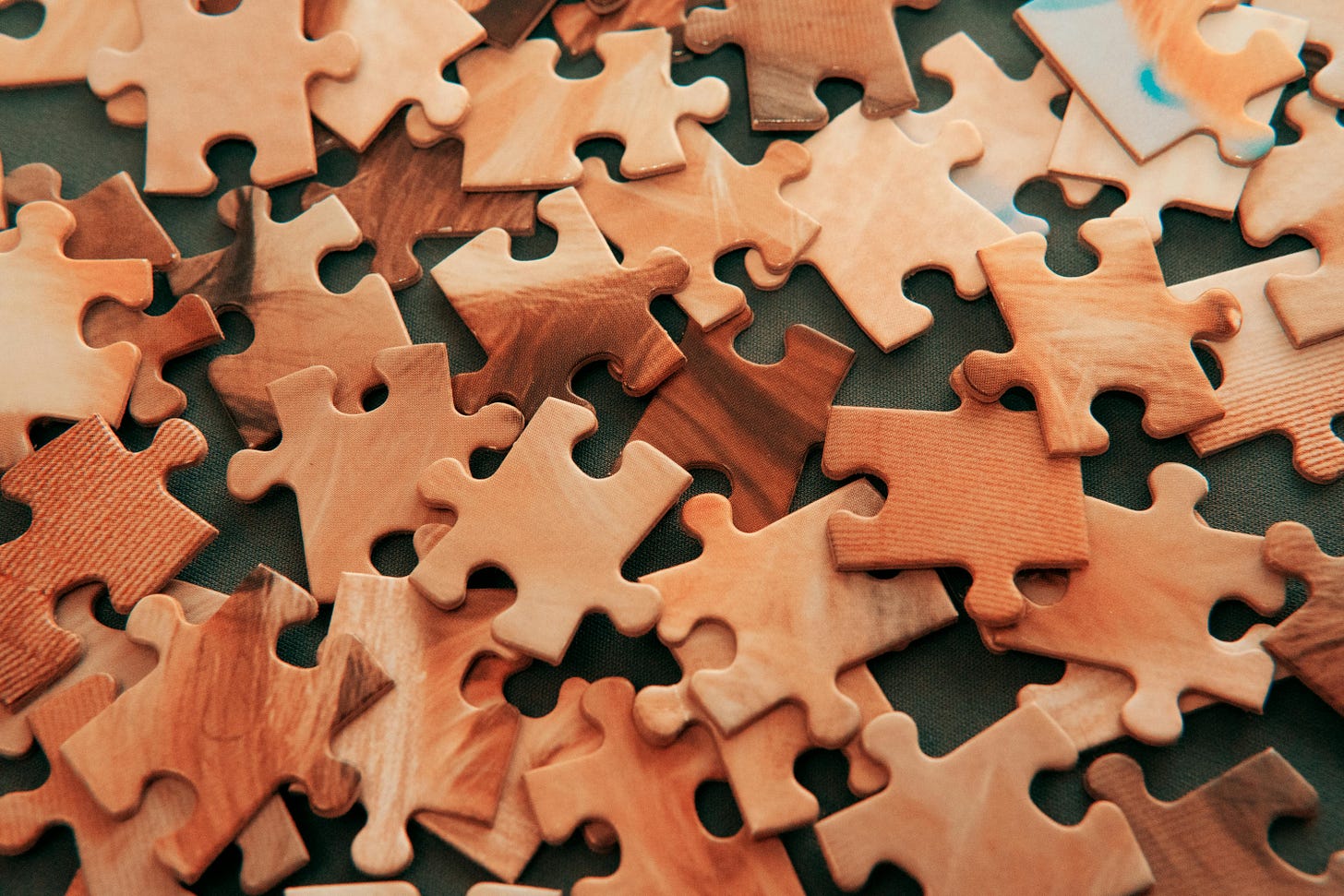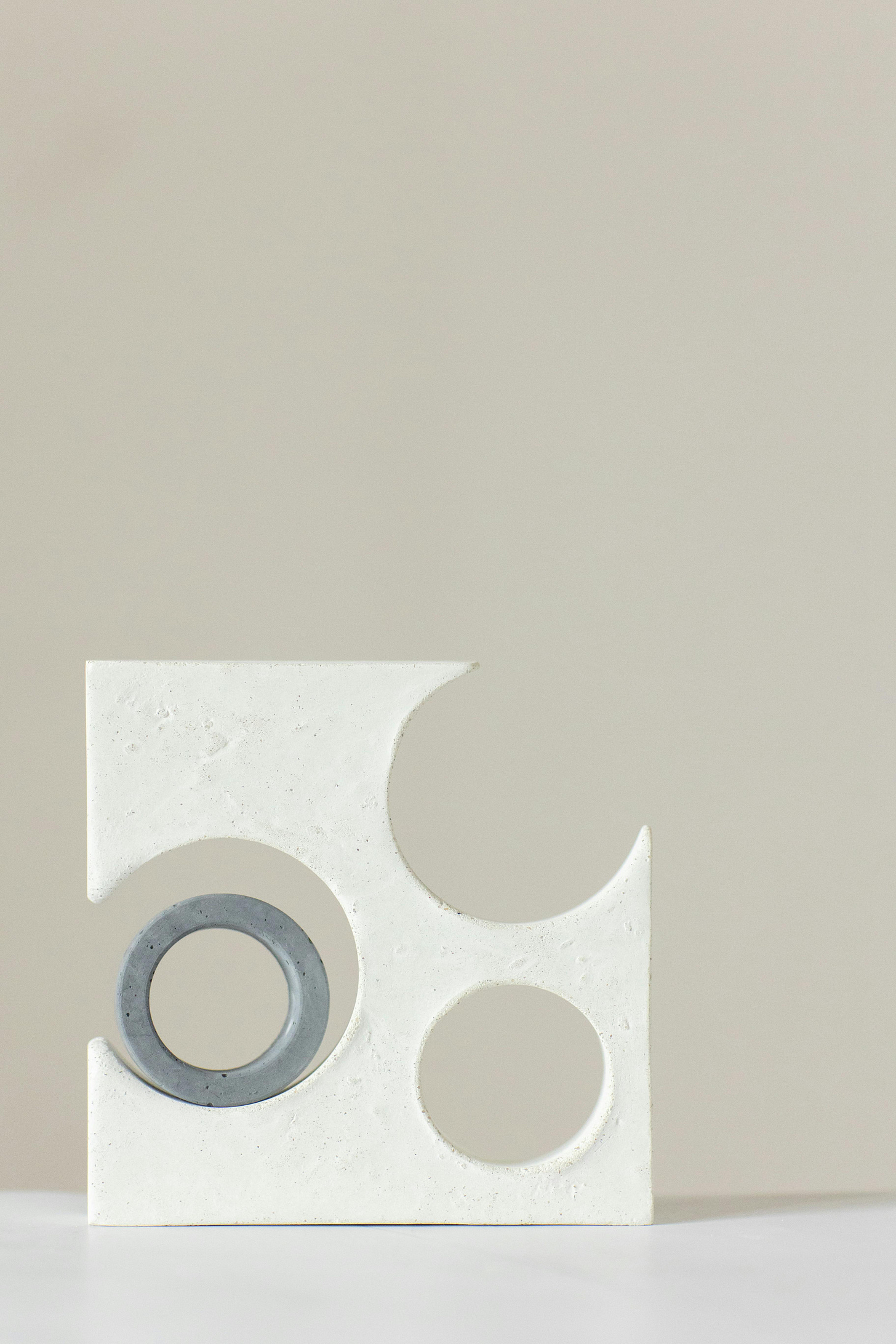Force Fit or Fall Into Place: Collecting and Connecting in Midlife
This week's thoughts from my cozy yellow chair...
Collections and Connections
They accumulate in the corners of our minds and homes—skills, experiences, dog-eared books, fragments of inspiration—not as random clutter, but as whispers of something more significant taking shape. Have you ever felt that familiar midlife restlessness—the sense that you're circling something essential, gathering fragments that seem disconnected yet somehow significant to your evolving identity? Collecting bits and pieces along the way in hopes that it would lead you to that next right thing? That ONE best thing, perfect spark, or idea. What if there was never going to be the one right thing? Could the inspiration, direction, purpose you seek be found within the collection?
While sewing this week or working on projects in my cozy yellow chair, legs crossed and my dog in her bed at my feet, I wondered how all of the things I had collected fit together. You see, I have been collecting for some time in midlife. I know that my path forward still has holes in it that need to be filled by exploration, failure, and experimentation. But, before I move on to try something new, I often pause to try to connect what I have curated up to this point.
Let me be clear, I am a collector by nature. As a former elementary teacher (who now trains education majors), I keep almost everything in case I find some unique or original use for an item in my teaching or personal practices. As teachers, we are savvy and resourceful, and tend to find value in everything (as evidenced by the number of boxes stored in our basements).
My collections are made more complicated and messy by the fact that I have been a “dabbler” for some time. This means I have a wide selection of craft and art materials at the ready should I have a whim to knit, sew, or take up lino printing at any given moment. But, it also means that I have physically and mentally collected ideas, practices, and “sparks” of interest that seem to swirl around with not apparent purpose. I can certainly COLLECT! As I said in last week’s post, however, I need to make space and that means letting go and making space.
Because I want to believe that everything has a purpose and use, I have a hard time letting things go. Envision a parking lot with many spots and cars parked. The parked cars are thoughts and ideas that I have collected. But, as much as I want them to be orderly and organized, they often look similar to the the picture below…parked in a semi-permanent way, waiting to move and have purpose. Their drivers (catalysts within the ideas that move them forward) waiting patiently inside for the signal to move. Do you often feel this way, too?
If left like this, my mind would look like vast seas of parking lots, partially filled, waiting for purpose. But, I find pausing to brainstorm, journal, and generally process ideas helps me link them. When we engage in these practices, they do more than just occupy our hands. Neuroscience shows us that creative expression creates unexpected neural connections, mapping pathways between what we thought were disconnected regions of thought. Art practices that draw multiple emotions within us (awe, wonder, surprise, sadness, fear) become salient, which rewires neural pathways. This rewiring is what allows us to force fit seemingly unrelated ideas together—connecting those parked cars that would otherwise remain static in distant lots of our mind.
Building awareness of what you like or don't like and better understanding how you are changed, inspired, or influenced through artistic practices creates opportunities for you to apply your own perceptual preferences to any area in your life. Enter informed discernment—the ability to recognize which forced connections spark new possibilities and which ones simply don't hold. My former colleague would call this intentional practice of force fitting a sort of catalyst for innovation, where connections emerge not because they naturally belong together, but because we actively choose to examine them side by side.
As midlife women, we are at this unique intersection of collected experience/wisdom and future potential. Our collections—of experiences, ideas, materials, and dreams—aren't random; they're the raw materials waiting to be connected in ways only we can envision. And reality is: we are not yet done collecting. Entering this second half of life isn't about simply organizing what we've already gathered—it's about continued exploration, bold experimentation, and "auditioning" of new elements that might become the catalyst for what Julia Cameron calls “synchronicity.”
Maybe the question isn't whether things will force fit or fall into place, but rather: what if our creative practices are the very tools that reveal connections we've been blind to? That is what I truly believe is the transformative power behind the sketch, stitch, and journal practice. Through these deliberate, meditative acts of creation, repeated with intention and approached with analytical curiosity, we access deeper layers of understanding—shedding light on connections that have been quietly forming beneath our conscious awareness, waiting for the right moment and medium through which to reveal themselves. Quiet alchemy.
I invite you to consider your own collections—what are you holding on to that seems disconnected from your current path? Have you allowed yourself the space to explore how these pieces might connect in unexpected ways?
Walking this journey with you,
Dr. Kerri Fair, EdD
P.S. If you're interested in experiencing the full Sketch, Stitch & Journal process through a 3 Day Mini Journey, subscribe so you will know right away when it is available. I am giving it away as a free pdf for early subscribers like you to try the process fully with guided sketching, stitching, and journaling. The results will include a needle book and new understandings about yourself!







